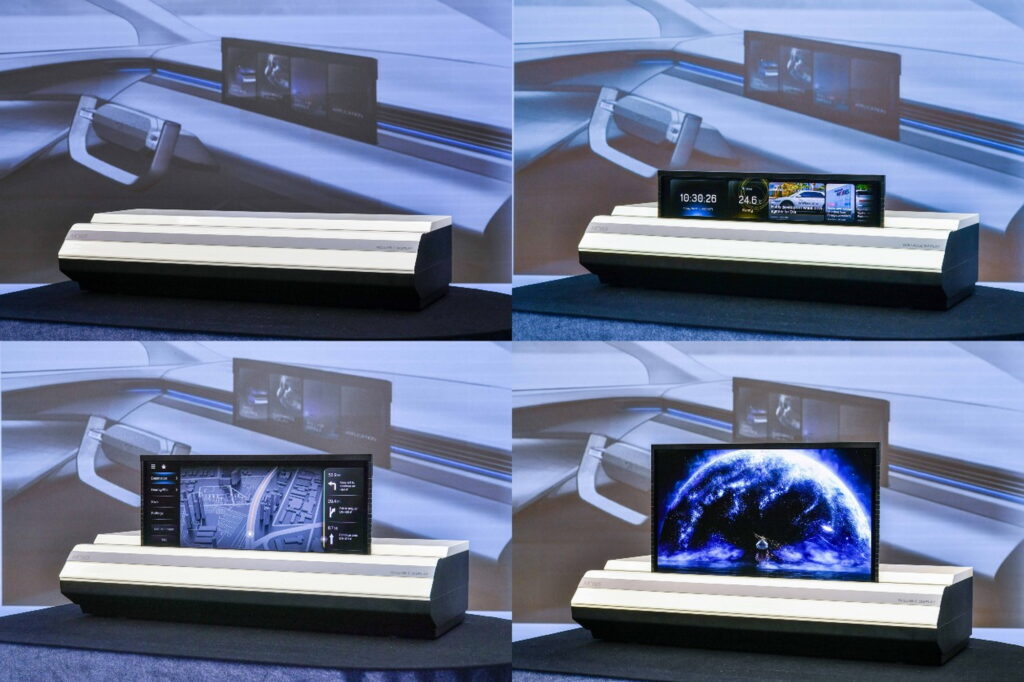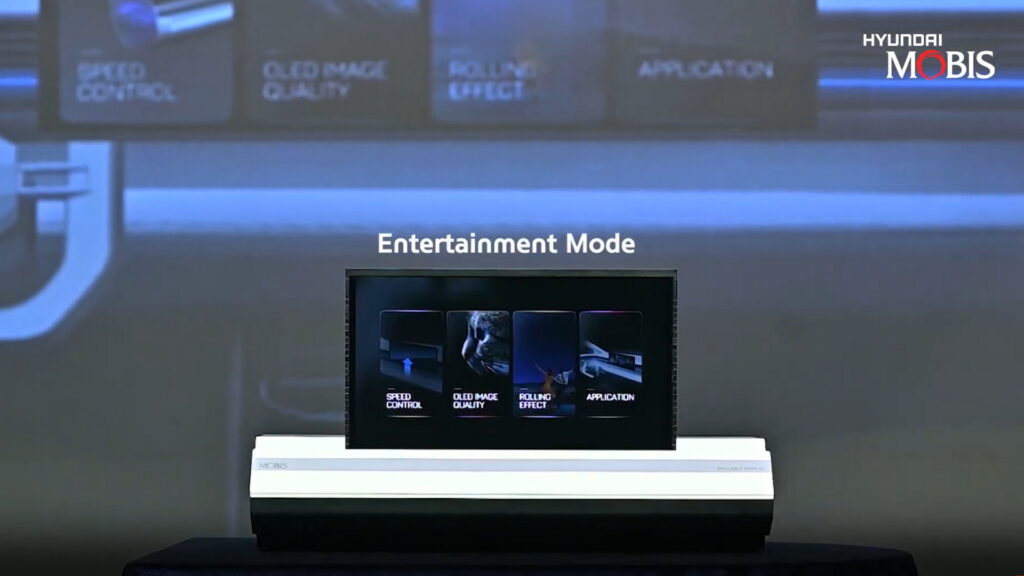Hyundai Mobis this week announced a new technology that could have a major impact on in-vehicle design. The company introduced a new roll-up screen that can display as much or as little information as is needed in any given scenario.
Although bendy screens are becoming more common in the world of smartphones and TV screens, Hyundai Mobis claims that this is the first time the technology has been applied to in-vehicle infotainment technology.
It’s made possible thanks to OLED technology that doesn’t require a glass screen. That allows the front of the display to made of something flexible, like plastic, which makes it bendable. In an automotive application, that’s useful for a number of reasons.
Read: Skoda’s Illuminated Grille Shows Pedestrians When It’s Safe To Cross The Road

With a screen like this that can hide away in the dashboard, it opens up more freedom for designers. As bigger and bigger screens are being added to vehicles, the pushback from designers who resent having a big black mass in the middle of their vehicles grows. This will allow the interior of a vehicle to appear un-screened until it needs to show information.
Able to be rolled out to different sizes, the technology is also usefully customizable. When you’re driving, it could only show a sliver of the screen to minimize distractions, but when you’re charging, it can extend to its full 16:9 orientation to show videos. Hyundai Mobis says that it is already capable of making this screen into an up-to 30-inch display, and that it can be rolled up into a space 4.7 inches (12 cm) deep in the dash.
“We are looking forward to becoming a game changer in the automotive display market with our differentiated technology,” said Han Young-hoon, Hyundai Mobis’ head of electronics convenience and control. “We will pioneer the global market by driving the trend of new infotainment technologies.”
Hyundai Mobis says it sees this technology as appealing, in particular, to European and North American luxury brands. It says that it has attracted the interest of a number of customers worldwide, suggesting that this innovation won’t be limited to its parent company, the Hyundai Motor Group.




